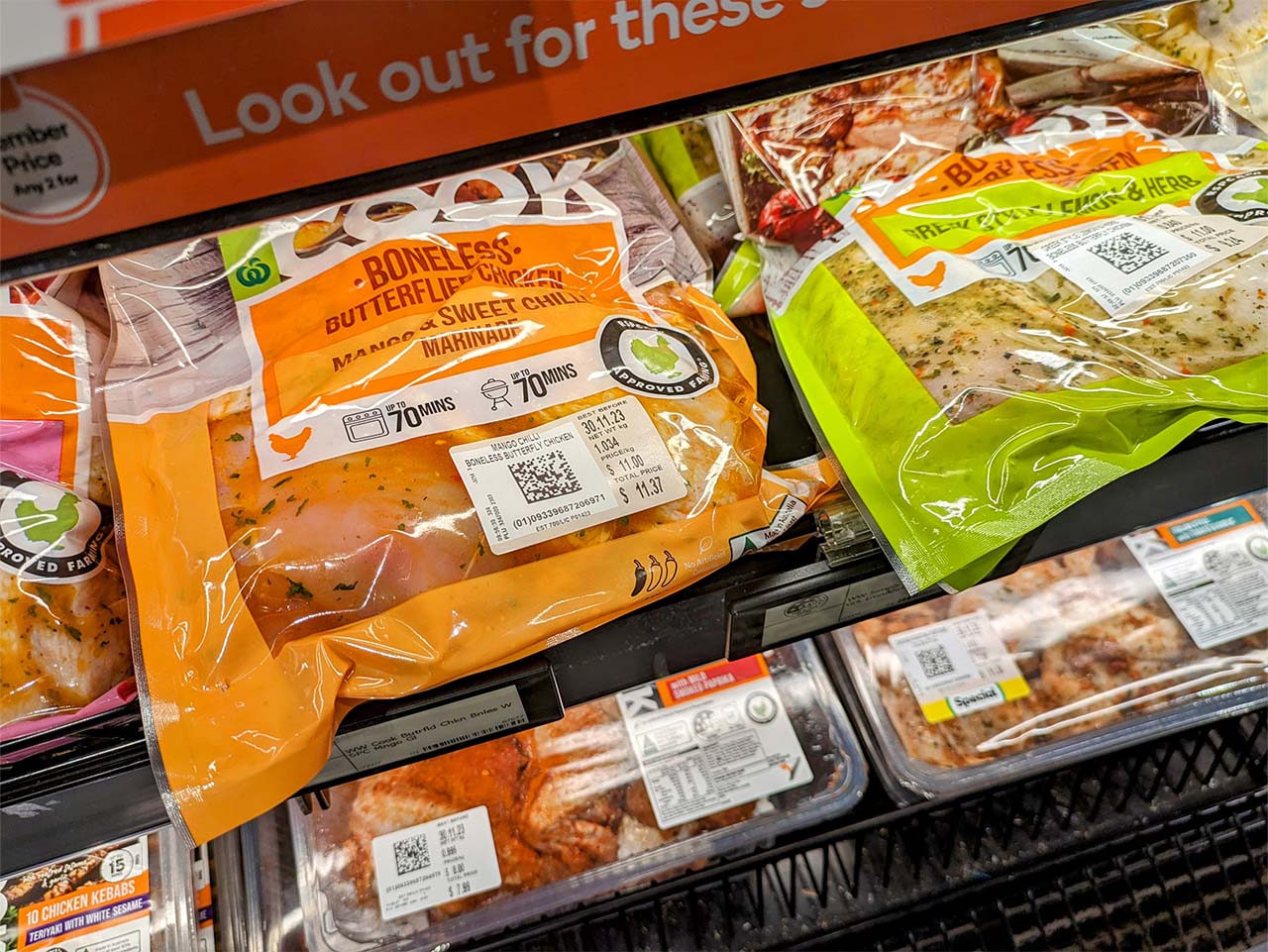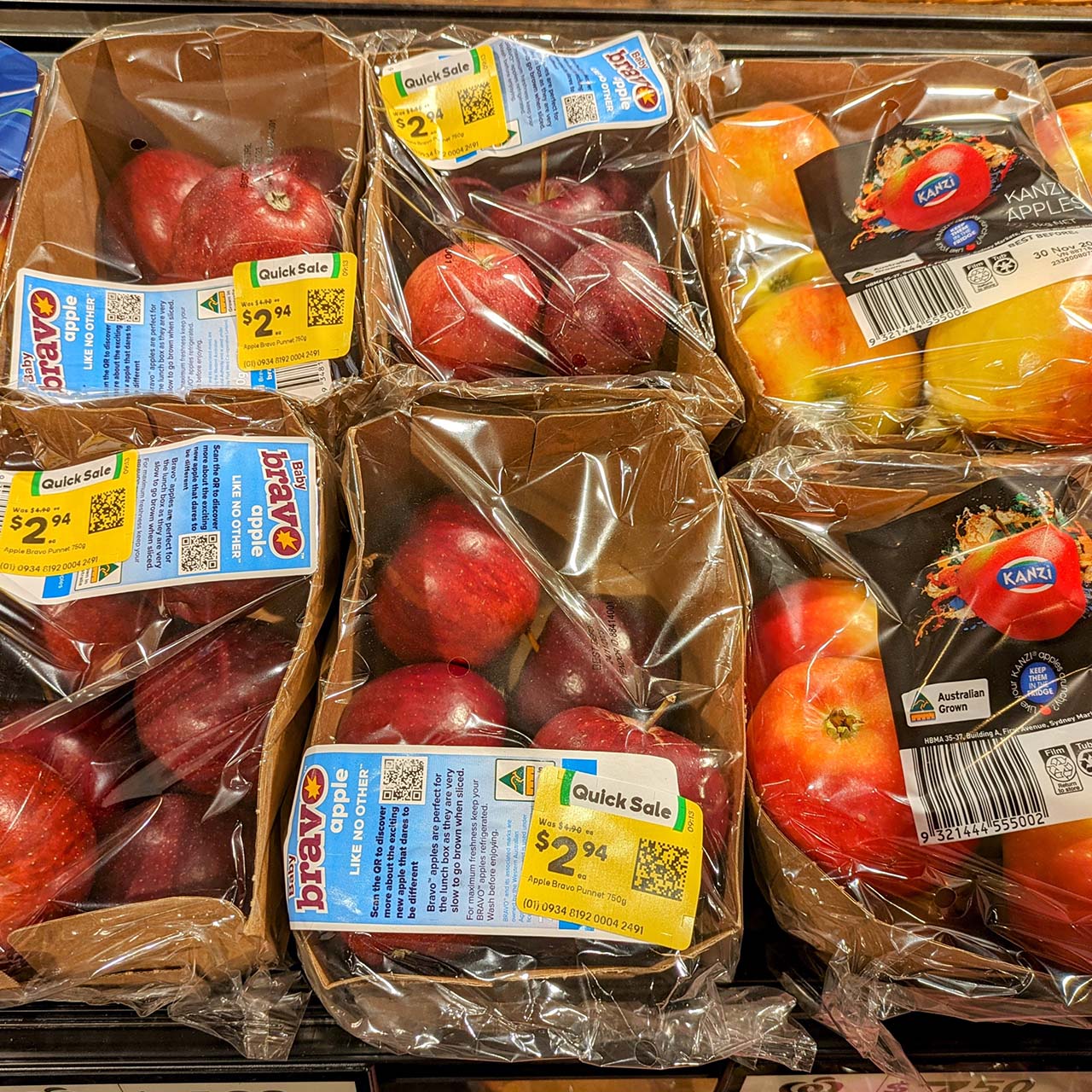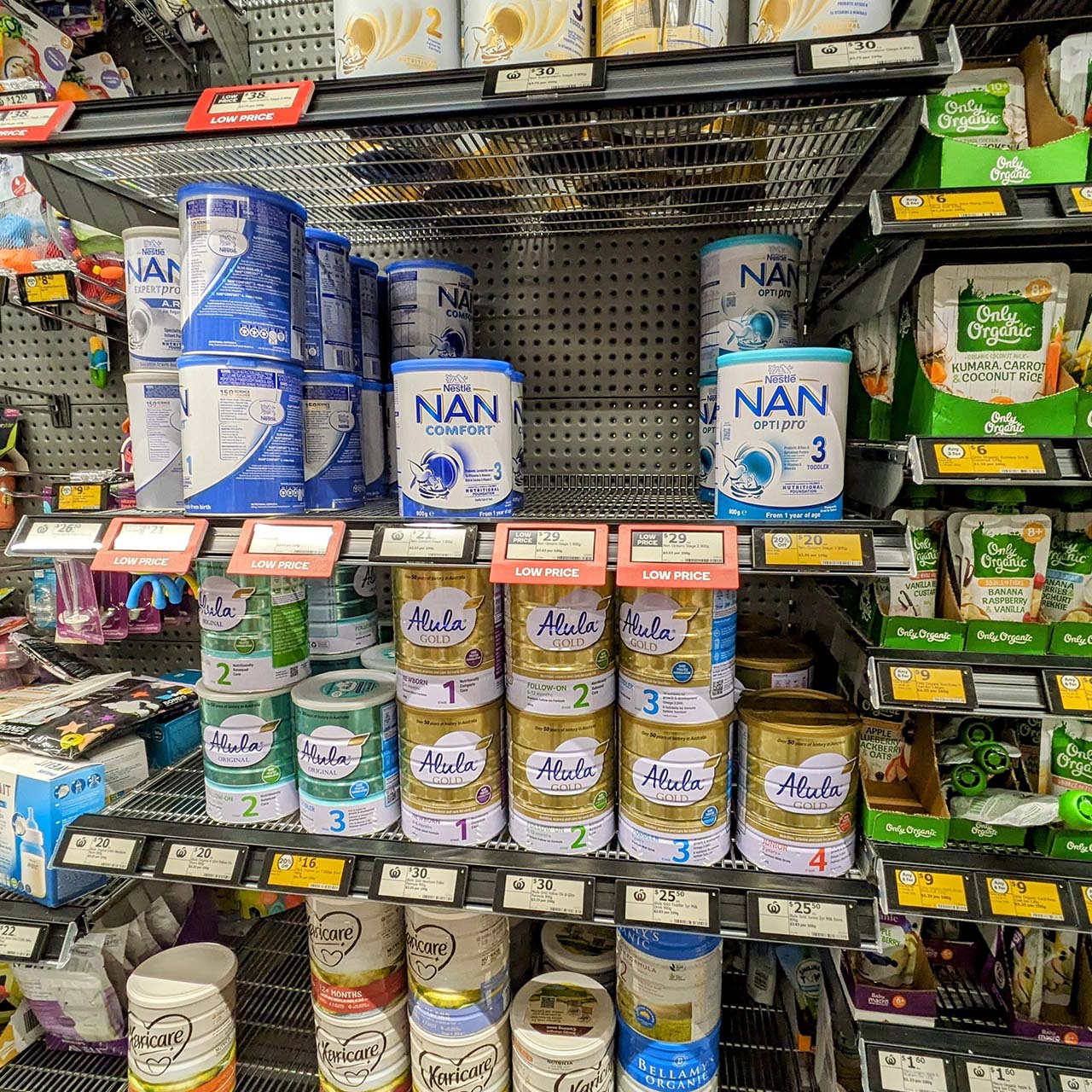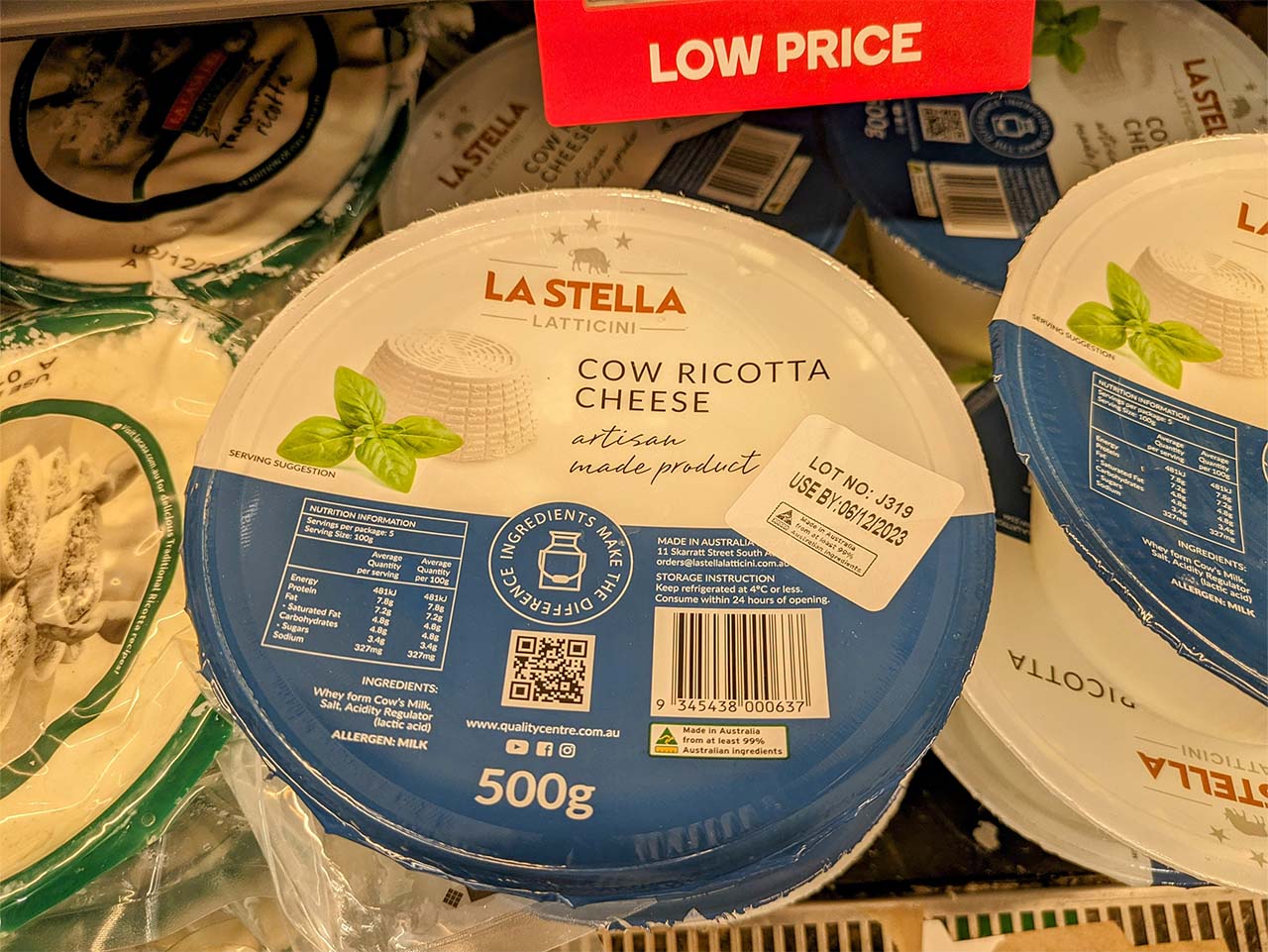Nov 24, 2023 by Mark Dingley
Five years ago, supermarket giant Woolworths began trialling 2D barcodes. From that initial successful pilot, suppliers and manufacturers have continued to roll out the technology in a range of industries ¬– from meat and fresh produce, to food service and even industrial manufacturing.
So what’s happened since we last looked in-depth where different industries were at with adopting 2D barcodes? Well, quite a lot as it turns out.
In this article, we take a look at how uptake has progressed, focusing on point of sale (POS) and the “one barcode to rule them all” – GS1’s Digital Link embedded barcode with its consumer-engagement potential.
Greg Calvert, who’s part of GS1's Traceability Solution Providers Special Interest Group (TSP-SIG) and the co-founder of FreshChain Systems, said, “This Digital Link Standard that utilises 2D barcodes is the most exciting development of the barcode in the last 50 years, and will transform the way we do business. Any data set that you want to share with a supply chain partner can now be encoded, decoded and shared using a single QR code with this new standard.”
Andrew Steele, Director - Retail, Food, Beverage & Primary Industries with GS1 Australia, concurs, saying “there has been quite a bit happening”.
Some key callouts Andrew notes include:
.jpg)
Meat is where the 2D barcode experience began for Woolworths, with its trial on fresh meat and poultry products in August 2019.
Fast forward four years, and the vast majority of all meat supplied to the major supermarket carries a 2D barcode. In fact, with well over a thousand SKUs in the fresh produce and dairy section already carrying the Standard, it is anticipated that by mid-2024, all meat suppliers to Woolworths will be including the GS1 2D DataMatrix barcode.
One factor in increased uptake of 2D barcodes is the increasing retail capability to scan them at POS. So as different supermarkets upgrade their POS scanning beds and the software that drives them, to those that can handle 2D codes, we can, in turn, expect to see more suppliers taking up the 2D barcode to ensure their goods are attractive for supermarkets to stock. Matthews will be watching this space, as other retailers will no doubt begin to join the 2DB journey.

Ready meals are a similar type of “pre done” product. According to Industry ARC, the Australian ready-meals market is estimated to reach $1,241 million by 2027, and is poised to grow at a CAGR of 6.1% in the five-year period to 2027.
With this strong growth, and ready-meals similarity to kit sets, is this the next area of 2DB adoption?
Agricultural food production is another area where uptake is increasing.
Andrew Steele said, “GS1-powered QR Codes – GS1 Digital Link – implementations are transforming the way primary industry does business.”
He noted these next-generation barcodes contain the unique barcode number for POS as well as business information from across the product lifecycle, on top of connection to the internet: from the grower and pack house, to retail via DCs then onto shelves, and into the end-consumer’s hands, with information about a product available to each partner in the supply chain.
Andrew cited growing use of 2D barcodes in table grapes, cherries and citrus particularly, mentioning a 2DB traceability solution run in the Sunraysia region – one of Australia’s three major citrus-growing areas. Mildura Fruit Company, which exports fruit in cartons to wholesalers and in bags to retail POS, recently implemented the project with the support of Citrus Australia and Agriculture Victoria.
The project, which ran during last year’s citrus-harvest season, covered 11 different SKUs (and five different citrus varieties) headed for Vietnam and China. End-to-end traceability was enabled with each individual carton and bag labelled with a unique GS1 QR code, activated with a scanner after being attached to the product. The project’s aim was to reduce the risk of food fraud.

As we approach 2024, some 30-40% of fresh produce sold by Woolworths is now 2D barcoded, with pre-packaged salads and loose-leaf produce the first items the retailer actioned. In Australia, most lettuce is supplied by a core group of companies, and their year-round production made the move to adopting 2D barcodes more straightforward. Conversely, the vastly broader range of suppliers for fruit and other pre-packaged vegetables makes 2DB adoption more challenging, with little progress noted to date.

Australia’s infant-formula industry was an early adopter of data-embedded coding for product authentication and brand trust. Indeed, Matthews has been working closely with the industry for many years supplying next-generation coding and labelling technology with embedded 2D barcodes for highly successful anti-counterfeiting measures. The sector has not really advanced in the past year, no doubt due to the high levels of early progress made.
The egg industry is another with little movement in 2DB adoption. However, in this case, traceability in the sector is already at good levels, with each individual egg bearing a date code.
Just like eggs, milk and other dairy products are highly perishable. And just like eggs, each individual milk bottle or carton, and each individual block of cheese, bears a date code.
Australian Eggs, the nation’s peak egg industry body, says per-capita egg consumption grew by nearly a dozen eggs to 263 eggs in the 2022-23 financial year, up from 262 eggs the previous financial year. Regarding Australian milk consumption, IBISWorld forecasts a fall of 0.5% in 2023-24 to 96.2 litres per capita, mostly due to the rising popularity of almond and oat alternatives. Interestingly, the research company predicts growing demand from cafés and restaurants will constrain the fall, being key channels for milk consumption that continue to gain patronage from time-poor consumers.
Understanding consumers’ desire for traceability and provenance, will eggs and dairy be the next sectors to adopt 2D barcodes?

GS1 Australia’s Andrew Steele says, “There are multiple 2D implementations by retailers around the world, with several in Europe, Asia – Thailand, South Korea and Japan – and Brazil, just to name a few.”
In Thailand, convenience chain 7-Eleven implemented GS1 DataMatrix codes. The retailer was facing the problem of selling expired products to consumers, leading to the insecurity of consumers and loss brand image from consumer complaints. Initiated by CP ALL, the project took almost three years to prevent the sale of expired product at point of sale. 7-Eleven cashiers say the pilot has been a success, in improving quality assurance, and making the QA process easier.
So why are supermarkets continuing the 2D barcode journey?
The key purpose of 2D barcodes is food safety; in a nutshell, they stop consumers from buying out-of-date product.
Retailers can now send staff to targeted areas of the store to carry out price reductions on items that are near expiry. But rather than relying on a human having to read each label to check whether the date is within expiry, staff can just scan the product with their gun, and if it’s close to expiration date, they can then place a reduced-price sticker on the item.
An example of this in action at the check-out is if someone purchases a product that has a best-before date of the next day, they are alerted to this by a warning on the POS screen saying that the reduced-price product is about to expire. This is far better than consumers purchasing the product for full price, only to take it home and two days later discover that it expired the day before.
Another benefit is the reduced risk of errors. Instead of store staff having to look for a date code, then manually enter information, they can now scan the 2D code and the system will automatically establish if the product needs to be reduced in price.
2D barcodes also enable highly targeted recalls if necessary – offering another aspect again to increased food safety for the consumer.

So far, we’ve looked at the first stage of the 2D journey.
The next phase will involve a move to GS1 Digital Link embedded QR codes, which will allow for consumer engagement. These not only have embedded data about the product, but can allow for consumers to scan the code via their smart device and then engage with the manufacturer to get recipes, preparation and cooking notes, or even information about the farm that grew the product and the date it was harvested.
While exciting, this aspect is still in development and is yet to come. But it’s certainly something to watch out for.
At the moment, although we already see QR codes on a lot of packaging, when a consumer scans one of these QR code, they are taken to the company’s website. The reason is that right now, systems don’t have the capabilities to be able to embed all the information.
Most current scanning beds will read the first QR code they find, but won’t look for a Digital Link embedded QR code, and are unable to correctly read more than one QR code on a product. This is the reason behind retailers looking to update both the software on scanning beds and installing new, faster scanning beds at POS.
As you can see, we’re only part-way along this exciting journey of adopting 2D barcodes, although we can already see just how they will revolutionise retailing, especially around consumer safety and consumer engagement.
Digital Link QR codes have a lot of potential in retailing – indeed, they could be “the one barcode to rule them all” – particularly with regards to authentication.
Stay tuned for an update, when we look further at how Digital Link QR codes can deepen consumer engagement, while offering increased food safety – all with taking up less valuable space on packaging.